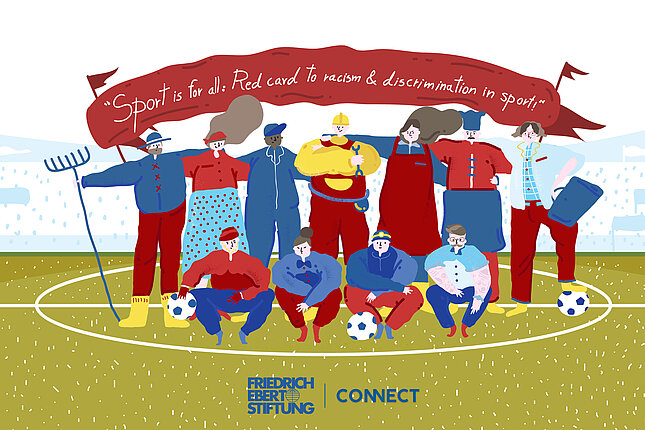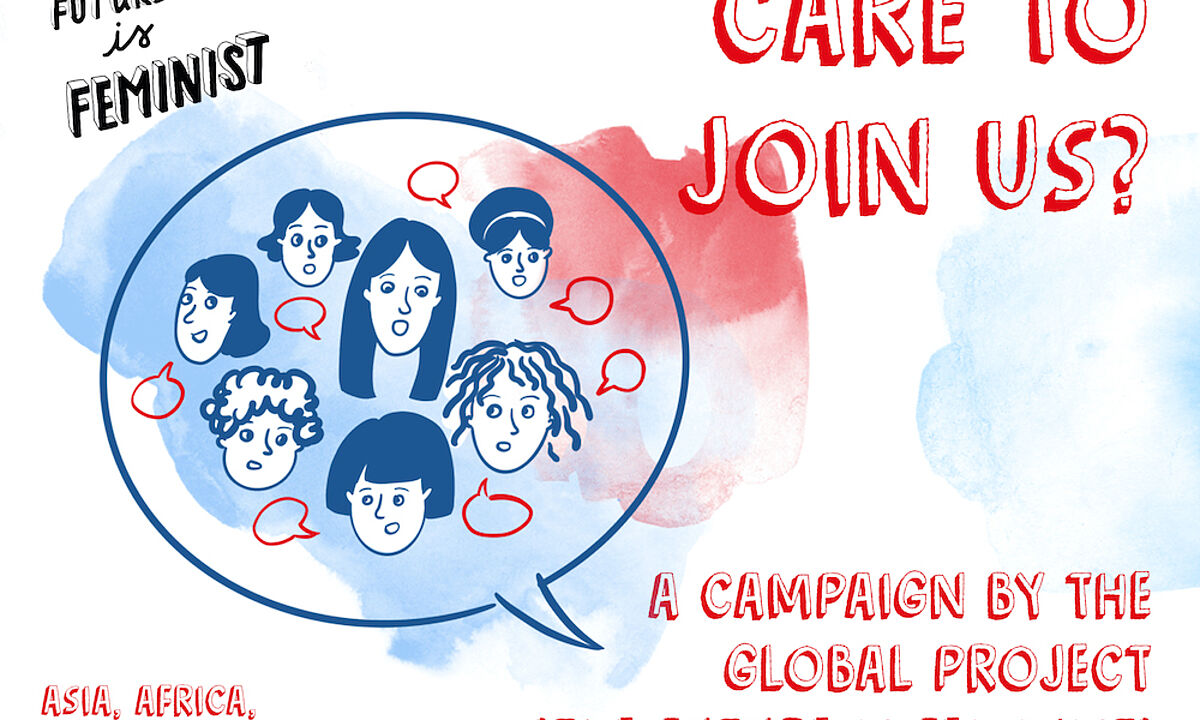Football, xenophobia, racism, discrimination and a few more things
Homoeroticism
Football tells us a great deal about identity. Even a budding sports journalist knows that. And it has come to be a meeting point and even an advertising theme. But what we never discuss is the varying forms of this identity that are possible, let alone the consequences, which are sometimes ill-fated.
Saying that football is tied to identity is comforting because it places higher status on it than just a triviality: it allows us to emphatically claim that “soccer is the most important of the least important things” (another triviality). Of course, this importance is derived precisely from the fact that it comprises a series of memories and stories in which very diverse identities are invented and adopted and from the fact that its effectiveness is based on its emotional warmth (the apparent “passion”), the potential beauty of the game (although rare, to be honest), and the unpredictability of the outcome. But the comfort of identity overlooks—or conceals—that we have not explained anything with this; that we need to add another dimension that is indispensable (and generally covert): the dimension of power.
The stories of identity that football involves—or has involved in Latin America in the past—have been centered on a wide variety of themes. At least in broad terms, these have included ethnicity, race, class, territory, and country.
The dimensions of identity involved are not just the two most visible ones: identity at the micro or tribal level (the club, the team, the colors) and national identity (national team, country, homeland), although these also require our attention before we start celebrating. The stories of identity that football involves—or has involved in Latin America in the past—have been centered on a wide variety of themes. At least in broad terms, these have included ethnicity, race, class, territory, and country—all of which were triggered by stories that—in some cases—labeled themselves as “playing styles”.
There is something major missing—and not just in Latin America in this discovery and in these stories: the dimension of gender was silenced (as well as banned).
Ethnicity stems from the actual roots and conflicts among Europeans (not only the English), criollos and mestizos; class, from the sport's popularization and the disputes over professionalization; race, from the appearance of those of African descent; territory, from the close relationship between teams and cities or towns (or neighborhoods in major cities); and finally country, which found the ideal channel to popularize narratives of identity in soccer in 1916 and the appearance of international competitions. At the same time, however, there is something major missing – and not just in Latin America: the dimension of gender was silenced (as well as banned) in this discovery and in these stories.
Let us pause here and use this missing component to better illustrate the dimension of power. The commonality of identity sometimes overlooks the fact that these are essentially male identities and stories, that they were imposed as universal at the expense of censorship and the exclusion of football and female fandom. To top it off, the culture of sports does not allow women to be a channel for identity narratives, since this is impossible based on a broader principle that is not just Latin American. According to this principle, the narrative of one's homeland cannot be told from a female perspective and women cannot be the heroes in a nationalist story. On the contrary, the excess of narratives—the effective excess of narratives—in male football ruled out the possibility of having a female story altogether, and even excluded it, as we have already noted.
In football, the prevailing story is that the one telling it is masculine: but the "other" is gay—not a woman—which doubles the exclusion of women in one fell swoop.
Thus the aim here is not to celebrate identities, but to assess who creates them, who adopts them, and how they are narrated. And fundamentally, who they are narrated against. Because, as we know, every story of identity is also a story of otherness: what someone is and what someone isn't. In football, the prevailing story is that the one telling it is masculine: but the "other" is gay—not a woman—which doubles the exclusion of women in one fell swoop. It is a matter entirely for men, which in turn creates space for a homoerotic story and—paradoxically—a homophobic one. This is an initial common ground for discrimination that was recently used in an unsuccessful ad by television broadcaster Torneos y Competencias [Latin American sports and entertainment service]: disguised as alleged criticism of Russia's repression of homosexuality, the ad revealed the persistent anti-feminine discrimination established by football culture.
Racism and xenophobia
The same holds true for the concepts of ethnicity and race. Latin American soccer was built on top of an ethnic dispute (at times disguised as anti-imperialism) during the process of making a European-invented game more criollo. Once this initial stage was over, however, it gave rise to two conflicting junctures:
- The national narratives of differentiation—Buenos Aires against provincial Argentina, Santiago against Valparaíso, Rio de Janeiro against São Paulo, coastal areas against the mountainside in Colombia, Ecuador, and to a lesser extent in Peru, and
- The racialization of African-descendant ethnicity, a key concept that was crucial to the invention of "popular" soccer in Brazil, Uruguay, and Peru.
These concepts started to come into play at the international level in 1916: the Chilean league demanded that the points achieved by the Uruguayan team in the first South American Championship not be counted because they had "African players" on their roster. At the 1921 South American Championship in Buenos Aires, Brazilian President Epitácio Pessoa stated his desire to have the Brazilian team made up of only white players since the year before, the Argentine press had called the Brazilians "little monkeys" when they passed through Buenos Aires on their way to the South American Championship in Chile. This was not the first presence of racism in "white" Latin American societies; we are simply pointing out that football allowed this racism to establish itself from then on and gave it a competitive advantage.
The prevailing voice and practically the only perspective throughout the Americas is still white, urban, and middle class. The best example of this in football is in Brazil, […] with its first World Cup title in Sweden, led by its star players Vavá, Didí, Pelé, and Garrincha.
Since the 1930s, all these concepts were primarily narrated by the mass media, with the resulting prevalence of stereotyping. The media uses stereotypes to create and tell narratives, simply because this is the method it has to readily put a chaotic world in order. The problem comes when a stereotype also dictates our understanding of the world since no other story lines can be found. Here we see the problem of power once again: the narrators were—and mostly still are—white and middle class, so all their narratives were created from these perspectives. The prevailing voice and practically the only perspective throughout the Americas is still white, urban, and middle class. The best example of this in football is in Brazil, where it was revealed that an apparent racial democracy was achieved starting in 1958, with its first World Cup title in Sweden, led by its star players Vavá, Didí, Pelé, and Garrincha. Three black men and a mulatto. But this revelation was made and publicized by educated white men: Gilberto Freyre and Mário Filho.
A discriminatory celebration
The aim here is not to attribute the homophobic, xenophobic, and racist excesses of Latin American fans to mass culture, however. Mass culture simply sets the stage for the prevailing stories such that broadly homophobic, xenophobic, and racist societies cannot avoid having these characteristics in their mass culture, and thus in their soccer. Due to its massiveness, soccer provides greater visibility of these narratives and sets the stage for the masses. These are not everyday racist acts. Instead, it is a crowd berating the blackness of a particular soccer player in mostly white societies. The xenophobic narrative, in turn, is disguised as a joke. Sports journalists think very highly of their own humor and believe mutual bashing between Chileans and Peruvians, Argentines and Brazilians, or Colombians and Venezuelans can be adopted based on the argument of tradition ("that the way it's always been") and humor ("not seriously").
The outlook is thus dreadful. FIFA regulations appear to have achieved few results in the world of UEFA, let alone in the world of CONMEBOL. It is possible that this relative lack of success is due to an issue of power. The ones who make these rules—for the sake of political correctness—are members of the same groups that can and do discriminate on multiple bases (white, urban, and rich, if possible). In the case of Argentina, no one seriously believes that it is that bad to call a rival "black," "Bolivian," or "fag"—it's a "guy thing," said in the heat of the moment during the game. It is certainly not possible to find fault with tens of thousands of fans who are simply adopting the ethics of their dominant classes, either.
It will take far more than a few well-written disciplinary rules to potentially undo this process. Last August, Frank Fabra—a Colombian player of African descent, who plays for Argentina's Boca Juniors—was insulted by rival fans of “Estudiantes de la Plata” [Argentine professional sports club based in La Plata] with predictable shouts of "black," "fag," and "Colombian." The referee decided not to interrupt the game, claiming that the shouting did not come from the entire stadium.
So, as we said: it was just a joke.
###
Pablo Alabarces holds a PhD in Sociology from the University of Brighton, England. He is Professor of Popular Culture at the Faculty of Social Sciences of the University of Buenos Aires. He has published several books on football and popular culture.
About FES Connect
Connecting people, in the spirit of social democracy, we source and share content in English from the German and international network of the Friedrich-Ebert-Stiftung.







